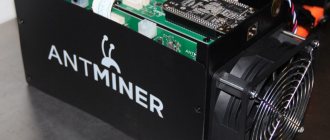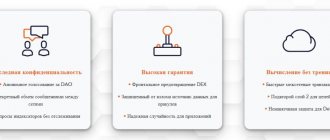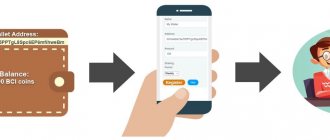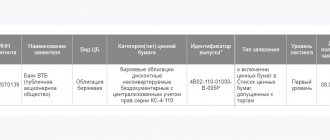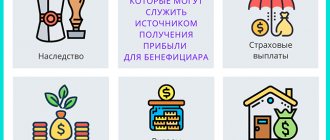Whether you are purchasing tokens in an ICO with the intention of later selling them on an exchange or you are taking the project off the market, there are a few things to keep in mind:
- Regulatory control is increasing; many cryptocurrency exchanges are trying to avoid listing security tokens.
- Liquidity is critical. You need to invest in something (or strive for something) that will potentially be bought and in demand.
- the project team, lawyers and financiers of the company must look quite professional in the eyes of the stock exchange.
The official token can always be purchased on the project’s website, but it is unlikely to be sold there for a profit. Listing a project on the exchange usually increases its price by up to 25%. Startups cannot get on all exchanges (this can be long, expensive and the specifics vary).
You may see the hashtag #WhenPolo, which refers to the question “When will the token be listed (originally by Poloniex)?”
Criteria
- You will need to prove that your altcoin is useful, has value and liquidity. You can't just create a new coin and expect people to appreciate it. The most successful alts have something else. That is, you need to create demand.
- If there is demand, you need to prove that the coin is protected. There have been cases where the project was able to insert malware into its client and was installed on the exchange with it. The project's code should most likely be open and verified.
- The easiest place to start is with lower-tier exchanges, which are relatively easy to list. Some exchanges do this for free.
- When a coin becomes more popular, you can move to larger exchanges, up to the strictest ones like Coinbase. Listing prices will be higher, but not necessarily if the volume of the coin is large and will generate a lot of commissions for the exchange.
Note that not many coins even make it to step 3.
What platforms are worth keeping an eye on?
It is believed that the initial opening of trading on a small and not very well-promoted platform for developers is akin to failure. However, this is not quite true. A very real scenario is when a token gains popularity on small and medium-sized platforms, after which it is recognized by leaders. Binance initially did not accept EOS and Ethereum, but after the projects were finalized and gained strength, the listing of both took place.
Here is a list of popular and medium-sized exchanges, the appearance of which can greatly affect the price and future fate of the cryptocurrency:
- Binance
- Bittrex,
- Bithumb,
- BitFex,
- BitFlyer
- Coinbase
- CoinEgg
- CryptoBridge
- Gate.io,
- Exmo,
- Kraken,
- WEX,
- Poloniex,
- KuCoin,
- Huobi,
- Yobit,
- OKEx.
It can be expanded twice, but this amount is enough for initial familiarization. To get acquainted with the table of the largest platforms in terms of trading volume, you need to go to the section with the top crypto exchanges.
Exchanges with free listing
Less popular exchanges such as EverCoin, EtherDelta do not require much information. What is listing on a cryptocurrency exchange such as a DEX? For ERC20 tokens it is very simplified because no separate wallet is required since all tokens can use the same one. If your coin is not ERC20, you need a project on GitHub (hosting for projects) that allows you to create a wallet.
The process of adding tokens to the EtherDelta decentralized exchange is free and does not require any permission.
Any Ethereum based token can be imported as a custom token and available for trading. To get on the official list in the sidebar, you need to write the following information to technical support to the Zack user:
A. Token address (code must be verified on Etherscan).
b. Official website (token address must appear on the official website for verification).
With. A small paragraph describing the token.
Listing and delisting of securities
Listing appeared in our lexicon from the word list, which is translated from English as “list”. Listing securities on the stock exchange is the procedure for adding shares and bonds of companies to the list of instruments that are quoted on the platform. After that, they become available for purchase and sale on it.
After passing the listing procedure, securities are included in the trading list of the exchange
Market participants often refer to the list itself as a listing. Moreover, each site has its own list.
The initiator of the listing is most often the issuing company, however, in rare cases, the exchange itself can express a desire to include certain securities in its list, if they are already in great demand among traders through informal channels.
For companies, listing on the stock exchange has a large number of advantages, and therefore it is not surprising that companies make a lot of effort to go through this procedure.
It is important not to confuse an exchange listing with an IPO. In the first case, the company seeks to be included in the quotation list of a certain trading platform. And an IPO means that the company becomes public and its securities become available to investors not only through exchange trading, but also through other channels, for example, through its branches.
Listing stages
The listing procedure involves several stages that the issuing company must go through before its securities become available to investors.
- It all starts with submitting an application. This can be done either by the issuer himself or by a person representing the interests of the company.
- Next comes the examination stage. Exchange representatives analyze both securities and all available data about the company. The profitability of the enterprise and the liquidity of its assets are examined. The company is required to provide all financial statements collected over the past several years.
- A special commission reviews the results of the examinations and decides to add securities to its listing or reject the application.
- If the decision is positive, both parties – the company and the exchange – enter into an agreement.
The procedure, on average, takes about 1-2 months. To remain on the list, the issuer will usually need to submit the necessary data to the exchange once a quarter.
The listing rules that trading platforms impose on companies vary. Some may allow listing only for enterprises whose capitalization is at least $50 million and whose presence on the market is at least 3 years. Others may either raise or lower the bar on these and other requirements.
If not all conditions are met, but the securities are interesting to the exchange, they are included in the preliminary list of securities - it is also called pre-listing . Investors can also trade these shares, but outside the walls of the exchange and the trading platform is not responsible for them.
Listing levels
Mostly, exchanges have several levels of listing. The first premium includes the most liquid securities with a high level of reliability.
Second-tier companies are no longer subject to such high requirements. And the lowest for enterprises applying for the third, so-called non-quoted list . Investors who purchase securities of companies of this level should independently carefully analyze their reliability.
For example, the London Stock Exchange has Main and Alternative platforms. The first is divided into two levels: “Standard” and “Premium”. The alternative market is intended for small and medium-sized developing enterprises, which are admitted here under a simplified procedure.
From time to time, platforms may increase or, conversely, decrease the listing levels of bonds and shares, or even delist them altogether.
Types of listing
There are primary and secondary listings.
Primary listing means that shares are available to investors on an exchange platform within the country where the company is registered.
With a secondary listing, securities are introduced to international markets and are included in the lists of foreign platforms. This can only be done if the primary listing stage has been completed.
There is also a double listing, in which a company successively seeks to be included in the quotation lists of several trading platforms in its home country.
As well as cross-listing - in this case, the company sends applications to be added to the lists of several exchange platforms in different countries. Moreover, if one of them approves the addition of securities, in the others the company gets the opportunity to complete the listing procedure according to a simplified scheme. This reduces not only material costs, but also the processing time of the application.
What are the advantages of the issuer
It is not without reason that companies make efforts to get listed on exchanges, since this promises them a number of benefits. Firstly, their investment attractiveness increases, and as a result it is easier to attract funds for further development. The advantages also include:
- growth in the capitalization of the enterprise with an increase in demand for issued securities;
- increasing visibility and trust in business circles;
- increasing the liquidity of shares and bonds;
- the ability to add to the lists of foreign exchanges;
- in some cases you can claim tax benefits.
However, we should not forget that from now on, increased attention will be paid to the company’s activities, and any actions will immediately affect the value of the shares. In addition, the listing procedure is not free. All examinations carried out cost money.
What does this give to investors?
The main thing is confidence. Investors, when investing in a company's shares, know that its reliability has been verified by professionals. Presence in the exchange listing saves them from independently checking the reliability of the enterprise.
What is delisting
Even if securities are listed on the stock exchange, there is no guarantee that they will remain there forever. Under certain conditions, the site may remove them from it. This happens if, for example, the issuer ceases to comply with the conditions of the exchange, fails to fulfill its obligations, declares itself bankrupt, etc.
A stock price that does not increase over time, indicating low demand, can also lead to delisting. It happens that the initiator of delisting is the company itself, for example, during a merger of enterprises.
How much does it cost to list on Binance?
There were rumors on Twitter that the listing on Binance was worth up to 400 BTC, and 2,000 ETH appeared in the exchange's wallet ahead of the coin's launch in August 2022. These numbers are not surprising for one of the top exchanges. However, in 2022 the site changed its policy.
So, they released a statement that the listing on Binance is now completely transparent, and all commissions will go to charity. The project itself must offer a fee for listing, or rather, a donation. The cryptocurrency exchange will not determine the minimum or maximum fees. The Binance team also stated that the size of the listing fee will not affect the outcome of the review of the project and its progress in the queue.
How can an investor make money from this?
Experienced investors have learned to make money on any cryptocurrency market events, and listing is no exception. The earning scheme is quite simple:
- the news report is monitored for the presence of suitable news leads;
- Having found information about an upcoming addition, the investor buys the asset before it hits the exchange;
- after being added to the exchange list, the coins are “merged”.
The most important thing is to choose the right exit point from the market. Typically, a coin has increased interest and, accordingly, the value is held for several days or a week, and then gradually decreases. Beginning investors are advised to sell coins without delay. Having experience tracking price adjustments, you can wait for the highest price.
Despite its simplicity, the method is also associated with several risks:
- The news may turn out to be fake. In such circumstances, the investor will go into the red. To prevent this, it is recommended to use only verified news sources, such as the official pages of exchanges and developers. Each news feed must be checked.
- Wrong choice of digital asset. As stated earlier, listing does not always have a positive effect on the value of the coin. The increase may also not be as sharp as expected. It is recommended to pay attention to not the top, but promising coins.
- Wrong choice of exchange. The profitability of such investments directly depends on their popularity. Adding to small services may not cause a significant resonance, but getting into the exchange list of large services is almost always a stir.
Listing on Binance DEX
Binance has added another service under its brand - Binance DEX, a decentralized exchange. This exchanger, however, has a different policy regarding listing fees. Binance CEO Changpeng Zhao said in a livestream in January that listing fees on the exchange would be around $100,000. This barrier to entry is intended to "reduce spam or fraudulent projects." In addition to the listing fee, there is also a voting process where the community is said to have a say on new listings on the DEX.
Delisting
This is the name for removing a coin from trading and deleting it from the site’s quotations. The main reasons are as follows.
- Low transaction volume.
- Insufficient capitalization.
- Violation of exchange or regulatory rules.
- Serious technical problems, neglect of the project by the founding team, obvious fraud.
- Negative user reviews, analysis results from technical specialists.
If the analytical department noticed reasons sufficient to terminate the agreement, and the project founders were unable to eliminate them in a short time, then a delisting date is set. The exchange officially announces it a week in advance so that people have time to prepare and transfer funds.
At the designated time, the currency disappears from the list of tradable assets. Anyone who has not managed to sell their stocks must withdraw them to external wallets.
Reviews and discussions
Listing on Poloniex
On the official website of the exchange it is written:
“We don’t have a specific set of criteria because each project is unique. We listen to the community and select projects that we think are unique, innovative and interesting to trade.”
If your coin exists on more than just paper and has real demand, you won't have much difficulty listing it. Poloniex warns that they cannot list coins that could amount to securities. Their website openly mentions the Howie Test.
Executives and other coin developers must have fully verified Poloniex accounts. The exchange does not require a listing fee, so there is no need to spend money to list a token. The process is relatively simple.
Ideal conditions for listing
- First , the listing must be in response to strong demand. Not short-term, but long-term demand. As a rule, immediately after listing, interest in the token appears, but over time it fades away (with the exception of a few cases).
- Secondly , the token code must be verified. Any update must also undergo a security audit.
- Thirdly , the confirmation threshold must be high or other methods must be provided to ensure the security of funds from the creators of the coin in the event of a blockchain reorganization.
- Fourth , the listing must include all information regarding the legal status of the coin, as well as regulations that may be adopted in the near future. As a rule, exchanges perform better in this matter, since legal due diligence is cheaper than examining the security of token software.
Token listing on Bittrex
Bittrex is a large and serious exchange, so it has a more strict process for staking coins. The Bittrex website states that their team stakes a small number of coins per week, choosing the best ones.
Previously, Bittrex offered an interesting opportunity: additional coin lighting for 3 BTC. This feature is not currently offered.
Like Poloniex, they also strictly prohibit any token that could be considered a security, such as currencies that promise returns to holders or represent shares of a company.
Bittrex will charge a fee to review the token, explaining that new coins are difficult to research and require evaluation before listing. The exact numbers are not known, it can reach $5000, on the forums they claimed amounts of 10 BTC-100 BTC.
The following information is required to submit a request to Bittrex:
- Coin name,
- Enhanced Verified Account: A team member or shareholder who owns more than 10% of the company must verify their identity on Bittrex.
- Coin Description: What makes the project and its token different from others? The Bittrex website warns: “If a token is only considered by the community for speculation, you will not be listed on Bittrex.”
- Coin abbreviation, a three-letter ticker that will always represent your coin.
- Logo in PNG format with a transparent background.
- Launch date.
- Link to Gitub to view source code.
- Additional questions: maximum emission, other exchanges where the token is posted, official blockchain explorer, commission fees, collection results, links to social networks.
- For tokens on the ETH blockchain, your smart contract address is also required.
What are tokens
From a technical point of view, a token is an entry in a digital ledger that can be used to access platform functions, where it serves as a unit of account.
But in the context of listing and trading on an exchange, a token can be considered a kind of substitute for a security. That is, it is a virtual analogue of a classic stock market asset. It may have the same properties or have a number of additional functions. In the world of cryptocurrencies, it exists only in digital form.
Cryptocurrency startups issue their own tokens to raise funds. But they can also perform completely different functions. For example, providing access to decentralized services, confirming ownership rights, conducting voting, etc.
Ideally, after listing, the development team should constantly improve and improve their token, providing it with new capabilities and useful functions.
BNB Development
The Binance exchange demonstrated an excellent development option using the example of its own token, Binance Coin (BNB).
BNB was first released through an ICO in 2022, its price then was $0.15. The token was immediately listed and began to be used to pay commissions on the Binance exchange. It was initially deployed on the Ethereum blockchain, later “moved” to Binance Chain, and then to Binance Smart Chain, where it is the native token of the network.
Both blockchains have gained high popularity among developers and ordinary users. As decentralized applications and the industry as a whole evolve, new use cases for BNB are emerging and the community of active users is growing.
In the Binance ecosystem, the BNB cryptocurrency has the following use cases:
- Binance Chain and Binance Smart Chain – in trading, staking, liquidity pools and DeFi.
- Exchanges Binance and Binance DEX – for paying commissions.
- Binance Earn – for using Staking, Liquid Swap, Launchpool and BNB Vault services.
- Binance Card is a plastic Visa card that allows you to make purchases with BNB.
- Binance loans – you can borrow cryptocurrency using BNB as collateral.
Such a wide list clearly shows that the benefits of Binance Coin are truly enormous and will continue to increase.
According to the team’s plans, as early as 2022, thanks to the development of cross-chain infrastructure, various opportunities will emerge to bridge the gap between DeFi and CeFi. This will lay the foundation for attracting even more active users and adoption of BNB in various fields.
Today, Binance’s cryptocurrency is consistently among the top five largest coins by capitalization, which has already repeatedly exceeded the $50 billion mark.
OKEx
Some leading exchanges have decided to completely waive listing fees. This is what OKEx is doing. However, this does not mean that a coin can be listed without any money in your wallet. They don't charge a listing fee, but they do take a security deposit. If the project has completed the listing process, it is returned.
The relatively new listing mode on OKEx includes 3 options:
- Vote,
- Cooperation,
- Community building.
All applications for voting on a list of tokens are reviewed by a special committee, after which the main investors and holders of OKB (OKEx's native token) vote for crypto projects. One vote costs 0.1OKB, all tokens are returned to the owners after the end of the voting. The cooperation mode involves listing projects that have received investments from OK Blockchain Capital and 5 OKEx Prime Investors. Finally, the community building mode requires the project to attract 50,000 new users on OKEx, and at least 20,000 of them must be active: have at least 1 ETH in their accounts and trade regularly.
What is the listing cost
Listing is generally a paid procedure, but there are exceptions. The cost of including a coin in the listing and the entry bar depend on the popularity of the trading platform. Small trading platforms most often include new promising cryptocurrencies in their lists for free, while large platforms require money for analysis and the amounts can amount to tens or even hundreds of thousands of dollars.
For example, the well-known exchange Poloniex states in its manual that coins are added to the list for free. Binance charges a fee, but uses it for charity and funding new projects.
According to investigative journalism from Business Insider, the minimum cost to add digital assets to an exchange is approximately $50,000, and can reach into the millions.
There have also been cases when the exchange administration was caught taking bribes. In particular, the management of the Coinnest exchange took $890 thousand for adding the S-coin cryptocurrency to the listing.
Cryptocurrency screeners
Screeners are the primary tool for finding investment opportunities in the crypto space. They monitor already established coins that have passed the initial placement stage. This is their advantage over ICO aggregators and dropshipping sites.
Information in cryptocurrency screeners is updated in real time. If a coin begins to show signs of scam, it is removed from the list or a warning label is placed on it.
Here are some examples of categories you can search by:
- price
- volatility
- total market capitalization
- average daily trading volume
- price change as a percentage over the desired period of time
After setting the search criteria, the site will filter thousands of crypto projects and show only those that match the request. This will help save time and effort when searching for new opportunities.
Advantages of cryptographic screeners:
- security - coins that have already passed the ICO procedure appear in the list
- relevance - if a coin is compromised, it is immediately excluded from the listing
- information content - screeners monitor emission, capitalization, transaction volume and other important market information in real time
Top proven screeners for searching for new cryptocurrencies:
Coinmarketcap . This is the first project that began to centrally monitor supply on the cryptocurrency market. Recently acquired by the Binance exchange, due to which the requirements for placed tokens and the quality of verification have increased significantly.
Section with new cryptocurrencies on coinmarketcap
Free. Almost all functionality is available even to unregistered users.
How to choose a promising crypto project
When working with any financial instruments, first you need to conduct a little market research. Crypto is no exception. Key points to pay attention to:
Community . There is no need to explain separately: a project that is being developed by a team of cool people like Vitalik Buterin a priori has a better chance of succeeding than a coin created by a no-name schoolboy.
Here are a few must-haves to consider:
- who develops cryptocurrency
- who is the customer (company, individual or programmers themselves)
- does the developer have a portfolio
So stick to projects with strong communities that are truly interested in and believe in their cryptocurrency.
What blockchain is it built on? New coins are launched from the existing block chain. The coins use their own. The blockchain on which the coin is built determines the base cryptocurrency on which the network will be deployed. For example, tokens using the Ethereum blockchain such as Dai (DAI), Enjin Coin (ENJ) The Sandbox (SAND) have higher liquidity than more exotic ones like NEO and the like.
Application. A big part of a cryptocurrency's success is the technology behind it. It is important to understand how it will work in real market conditions and how it will outperform competitors.
For example, Ethereum. It is one of the best cryptocurrencies from a business perspective due to:
- smart contracts
- native blockchain integration with DeFi applications
- advanced scaling tools
Ethereum has this and BTC does not, so Ether has already overtaken “digital gold” in terms of the growth rate of new participants.
What problem does it solve ? There are thousands of ways to use blockchain in the real world and new ideas are emerging every day. Look for something that offers a more elegant solution to old problems (or provides an answer to new challenges). If the problem is made up from thin air, and for the purposes of the project it is vague and unintelligible “water”, stay away.
Road map . When deciding which cryptocurrency to invest in, look for a coin with a solid roadmap and clear growth plans. This is the key to long term success.
Here are a few things to pay attention to:
- Clear deadlines for the development of the coin (if there are no clear deadlines, this may indicate a lack of interest from the development team).
- When do they plan to release major updates?
- If there is a limited number of coins in circulation, when is this limit expected to be reached?
For example, there is a coin called Dbix (Dubaicoin on the Arabchain blockchain). It has been placed and is being traded on the stock exchange. But the roadmap looks like this:
Last update two years ago. Bad sign.
This may indicate that the developer either initially wanted to make easy hype money, or can no longer actively develop the project. In any case, there is nothing to catch without a clear roadmap.
Recommendations for staking an ERC-20 (Ethereum) token on Uniswap
Go to https://app.uniswap.org/#/pool and click " create a pair"
” (“Create a pair”), where you will see the following message:
“You are the first liquidity provider. The ratio of tokens you add will set the price of this pool. Once you are happy with the rate click supply to review"
Translation:
“You are the first liquidity provider. The ratio of tokens added determines the price of this pool. Once you are happy with the bid, click the "supply" button.
On Uniswap, you need to provide liquidity to list a token. You cannot provide liquidity for just this token. You will also need to select an additional token to provide liquidity.
This can be ETH or the equivalent amount of any ERC20 token. That is, the pair can be either ETH and an ERC 20 token, or two ERC 20 tokens.
Since you specify the token first, its meaning is completely arbitrary. The ratio you provide determines the price of the token.
For example, if you provide 1 ETH and 1 token, this means that the token price is initially set to 1 ETH. If you provide 0.1 ETH and 1000 XYZ tokens, then the price of XYZ is set to 10000 per 1 ETH or 0.0001 ETH per XYZ.
Telegram channels about cryptocurrency
When listing resources for monitoring new coins, you cannot miss the capabilities of the Telegram messenger.
The thread with discussions is on the main page - the rest is in discussions.
Any potential subscriber interested in news, reviews or buying/selling tokens can find a lot of useful information in crypto-oriented channels and groups. Very often, not very large “garage” projects are launched here, which collect investment at the initial stages in exchange for a share of future income.
Telegram is an anonymous platform. Reputable channels publish relevant information and also filter out scammers, but the level of security is still not up to par with screeners like Coinmarketcap, Coingecko or DappRadar. Any group is just a chat where everyone can write whatever they want.
Entering a successful business at the start is a very tempting prospect. That's why so many Telegram users are looking for information here.
The most popular Telegram channels about cryptocurrencies.
- DeCenter
- Minter Network
- DeFi Million
- Crypto Evolution
- Altchica
- BTC Champ
- Bitcoin Traffic
Join Telegram channels for information - it's absolutely free.

